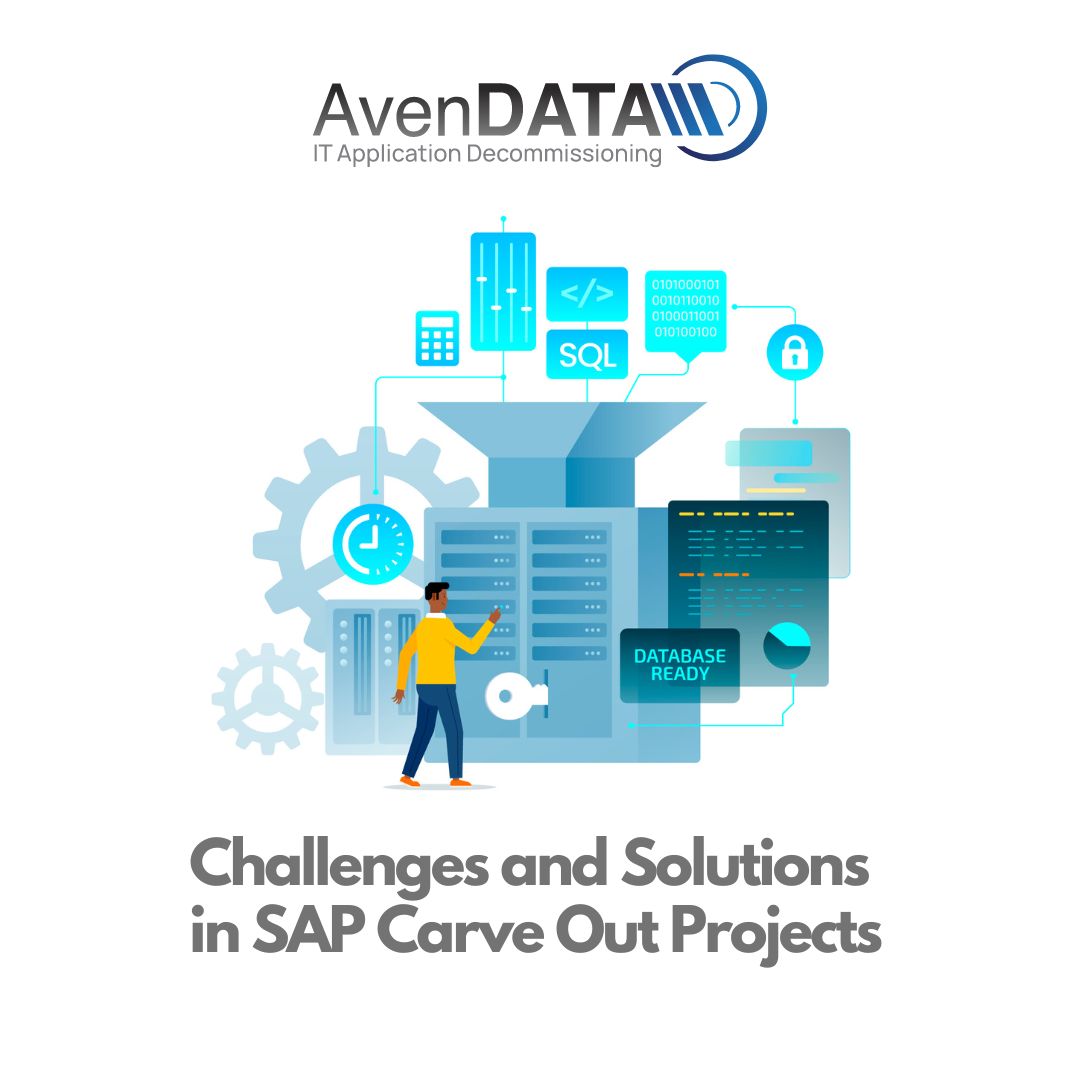In today's dynamic business environment, companies frequently undergo restructuring processes such as mergers, acquisitions, or divestitures. An essential aspect of these changes is the SAP carve-out project, where specific parts of a company's SAP system are separated to form a new entity. While the benefits of a successful carve-out are significant, the process is fraught with challenges. This blog explores these challenges and provides practical solutions to ensure a smooth and successful SAP carve-out project.
Challenge 1: Defining the Scope and Objectives
The Issue: One of the first hurdles in an SAP carve-out project is clearly defining the scope and objectives. Without a precise understanding of what needs to be carved out, the project can quickly become unmanageable and prone to scope creep.
Solution:
· Detailed Planning: Start with a comprehensive planning phase. Define clear objectives and outcomes for the carve-out. Document which business units, processes, and data sets are included in the scope.
· Stakeholder Engagement: Engage stakeholders early and continuously. Ensure that all relevant parties understand and agree on the scope and objectives. Regular meetings and updates can help maintain alignment and address any changes promptly.
Challenge 2: Data Migration and Integrity
The Issue: Migrating data accurately and ensuring its integrity is crucial. Data loss, corruption, or inconsistencies can severely impact business operations post-carve-out.
Solution:
· Data Assessment: Conduct a thorough assessment of the data to be migrated. Identify critical data elements and dependencies.
· Data Cleansing: Perform data cleansing to eliminate duplicates, correct errors, and standardize formats.
· Use of Advanced Tools: Leverage SAP data migration tools such as SAP Data Services or LSMW (Legacy System Migration Workbench). These tools can automate and streamline the data extraction, transformation, and loading processes.
· Validation: Implement rigorous data validation procedures. Test the data migration process in stages, using sample data sets before full-scale migration.
Challenge 3: Technical Integration
The Issue: Ensuring that the carved-out SAP system integrates seamlessly with existing IT infrastructure and other systems can be technically challenging.
Solution:
· Integration Mapping: Create a detailed map of all integrations and interfaces that the carved-out system will need. This includes internal systems and external partners or vendors.
· API Management: Use robust API management tools to handle integrations. Ensure APIs are well-documented and tested.
· Sandbox Testing: Use a sandbox environment to test integrations before they go live. This allows for identifying and resolving issues without impacting production systems.
Challenge 4: Managing Downtime and Business Continuity
The Issue: Minimizing downtime during the carve-out process is critical to maintaining business operations. Unexpected downtime can lead to significant disruptions.
Solution:
· Incremental Migration: Consider an incremental migration approach, where data and systems are moved in phases. This reduces the risk of a total system outage.
· Backup Plans: Develop comprehensive backup and contingency plans. Ensure that there are recent backups of all critical data and systems.
· Communication: Maintain clear communication with all stakeholders about the timeline and expected downtimes. This helps in planning around the carve-out activities to minimize operational impact.
Challenge 5: Change Management and Employee Transition
The Issue: Organizational change can be disruptive, and employees may resist or struggle to adapt to the new system and processes post-carve-out.
Solution:
· Training Programs: Implement comprehensive training programs to help employees understand and adapt to the new system. Provide hands-on training sessions and access to learning resources.
· Change Management Strategy: Develop a robust change management strategy. Communicate the benefits and reasons for the carve-out clearly to all employees. Address their concerns and provide support throughout the transition.
· Support Systems: Establish a support system for post-carve-out operations. This includes help desks, online resources, and dedicated personnel to assist employees with any issues they encounter.
Challenge 6: Legal and Compliance Issues
The Issue: Navigating the legal and compliance landscape is complex. Failing to adhere to regulatory requirements can result in significant penalties and legal challenges.
Solution:
· Legal Consultation: Engage legal experts early in the process to understand the regulatory landscape and ensure compliance with all relevant laws.
· Compliance Audits: Conduct regular compliance audits throughout the carve-out process. Ensure that all data handling and migration activities comply with legal and regulatory standards.
· Documentation: Maintain thorough documentation of all processes, decisions, and changes. This helps in demonstrating compliance and addressing any future legal inquiries.
Conclusion
SAP carve-out projects are inherently complex and come with a unique set of challenges. However, with careful planning, robust data management, effective integration strategies, and a focus on change management and compliance, these challenges can be effectively mitigated. By addressing these issues proactively, companies can ensure a smooth transition and set the stage for successful business operations post-carve-out.
Understanding and anticipating these challenges not only aids in smoother execution but also empowers organizations to harness the full potential of their newly structured SAP systems, driving growth and efficiency in their evolving business landscapes.






Comments